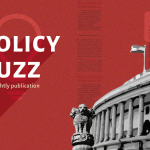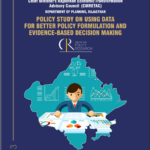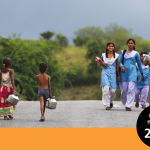
Teacher Absence, The result of prioritising inputs over outcomes
2 May 2012
Teacher absence in India’s government schools is a well documented problem. Since the late 1990s, a number of independent studies such as the Public Report on Basic Education (1999 and 2009) and Kremer, Muralidharan et al’s 2004 World Bank report on teacher and health worker absence in developing countries have conducted surveys which assessed the degree of teacher absence in government schools. Reported absence rates range from between 14% in some states to up to 44% in others. Longer term and repeat studies such as ASER and PROBE Revisited have reported national absence rates to be fairly consistent since 2007 and between 1996 and 2006 respectively.
A range of studies have also sought to investigate the causes of teacher absence and what can be done to mitigate them considering its contribution to poor learning outcomes. A recent study by Accountability Initiative in two districts – Sagar (Madhya Pradesh) and Nalanda (Bihar) – sought to investigate the issue through a focus on the administration and its monitoring mechanisms. Our report is based on desk research, documents sourced directly from officials and interviews with just over 50 teachers, officials and independent agents throughout the elementary education system in both Sagar and Nalanda.
The study maps the current teacher recruitment and monitoring processes and identifies challenges faced by existing monitoring mechanisms in tackling and reducing rates of teacher absence. In this article, we discuss one of the biggest challenges – the difference in priority allocated to teacher absence by researchers and administrators due to the allowances available in the system for sanctioned absence.
Components of teacher absence
ASER 2011 suggests that rates of teacher absence in MP and Bihar are 17% and 15% respectively, figures supported by AI’s PAISA District Studies (2011) which found that in Sagar and Nalanda, absence rates are 19% and 22% respectively. However, when officials and teaching staff were asked to suggest what they perceived teacher absence to be and what their understanding of how much of a problem this is, the majority replied that rates were negligible and not in need of urgent attention. Those most critical of the system argued that absenteeism rates were no more than 10%.
This discrepancy between the results of independent studies and the reports and testimonies of officials is largely explained by the perceptions of officials about the different components of absence; leave, official non-teaching work, illness and non-attendance. Independent studies generally report absolute absence rates, irrespective of which component(s) may be responsible. They conduct surprise visits to schools and record the numbers of teachers physically present to the number of teachers officially enlisted at that school. In MP and Bihar, the administrations also record teacher absence but their figures tend to exclude any absence caused by sanctioned leave, non-teaching work or illness. Thus, they focus on the fourth component – teacher non-attendance.
An example: Say in a school of five teachers, if two were on sanctioned leave due to official duties and one remained absent without prior permission, independent surveyors would prioritise and record teacher absence (60%) but officials would prioritise and record teacher absenteeism (20%), a component of teacher absence. In this way, independent studies prioritise the question of whether teachers are present to teach while the administration is more focussed on whether teachers are following the rules it has set governing their presence, a logic that may make sense from a bureaucratic perspective but ultimately does not maximize the use of the teaching resource.
Sanctioned allowances for absence
The impact of this difference in prioritisation can be roughly quantified by looking more carefully at the administrative in the two districts.
Teachers in both states are broadly entitled to four types of leave during term time – earned leave, casual leave, leave on account of being delegated official duties and sick leave. Earned leave is leave teachers are legally entitled to take and is 10 days in MP and 11-14 days in Bihar. If this is not taken, it can be converted into cash at the time of retirement. Casual leave is more discretionary, intended for short periods of time. Teachers in MP are entitled to 13 days earned leave while Bihar’s teachers are entitled to 16 days of earned leave. There is no limit on leave for official, non-teaching duties as the amount granted is based on need. Sick leave needs to be verified by a doctor’s note and the allowance (for certain pay conditions) is 20 days in MP and up to six months in Bihar.
This information can then be combined with the total number of days schools are open to devise baseline absence rates. Theoretically, RTE entitles pupils in primary and middle school to 200 and 220 days tuition respectively every year. A review of the Bihar government’s official 2012 calendar as well as its academic calendar reveals that this academic year, schools should be open for 244 days. If we account for the fact that schools invariably also have to close for unplanned reasons throughout the year, a safe estimate of the total number of school days is 220. In addition to the baseline rate, we can also consider rates in other scenarios which include leave due to personal reasons, non-teaching duties and illness. The figures used in these scenarios are based on feedback from teachers and officials; that i) teachers will take all their casual leave ii) teachers will try to minimize the amount of earned leave they take iii) most teachers are required for at least 8-10 days of non-teaching tasks per year and iv) some sickness leave is either unavoidable or fraudulently taken.
Table: Sanctioned teacher absence rate under different scenarios (as measured by independent surveyors)
| Scenarios
[Teacher takes…] |
Casual Leave | Earned Leave | Non-teaching Leave | Sickness Leave | Total Leave | Absence Rate (total/220) | |
| MP | BASELINE. All CL / no EL / no non-teaching duties / no illness | 13 | 0 | 0 | 0 | 13 | 6% |
| A. All CL / 33% of EL / no non-teaching duties / no illness | 13 | 3 | 0 | 0 | 16 | 7% | |
| B. All CL / 33% of EL / some non-teaching duties / no illness | 13 | 3 | 10 | 0 | 26 | 12% | |
| C. All CL /33% of EL / some non-teaching duties / some illness | 13 | 3 | 10 | 10 | 36 | 16% | |
| BIHAR | BASELINE. All CL / no EL / no non-teaching duties / no illness | 16 | 0 | 0 | 0 | 16 | 7% |
| A. All CL / 33% of EL / no non-teaching duties / no illness | 16 | 4 | 0 | 0 | 20 | 9% | |
| B. All CL / 33% of EL / some non-teaching duties / no illness | 16 | 4 | 10 | 0 | 30 | 14% | |
| C. All CL / 33% of EL / some non-teaching duties / some illness | 16 | 4 | 10 | 10 | 40 | 18% |
In both districts, the baseline scenario is where a teacher only takes the leave he/she is entitled to and incentivized to take. This results in minimum absence rates of 6% in MP and 7% in Bihar. Scenario A accounts for teachers taking 33% of their earned leave entitlement, resulting in absence rates of 7% in MP and 9% in Bihar. Scenario B includes 10 days of non-teaching duties, pushing the absence rates up to 12% in MP and 14% in Bihar[1]. Finally, scenario C includes a further 10 days of leave due to illness, pushing absence rates up even further to 16% and 18% in MP and Bihar respectively. The important point to note here is that these levels of absence are sanctioned by the rules of the administration and do not account for cases of ‘absence without permission’ (or absenteeism).
Considering the lack of any system to provide replacement teachers on days when enlisted teachers are absent, this also illuminates the fact that the education systems is prepared to ask headmasters to adjust class sizes to compensate – a strategy guaranteed to inflate the pupil: teacher ratio on a given day to much beyond acceptable standards given that they are already high in both districts (in 2010 the pupil:teacher ratios were 1:62 in Nalanda an 1:44 in Sagar).
A final observation is that the degree of non-teaching tasks appears to vary significantly for different teachers. In Nalanda, around a quarter of the teachers interviewed were also appointed Booth Level Officers (BLO), responsible for executing a variety of activities related to polling, voter cards and other administrative tasks. In interview after interview, these teachers reported that they were required to attend weekly BLO meetings and had to dedicate one day a week to carry out their duties. According to the teachers, their meetings and other work often overlapped with school times. Thus, one crude estimate is that for 8 out of 22 teaching days in the month (36%), these teachers are absent from their schools. This statistic is particularly significant considering, for example, in Silao block, Nalanda district, 94 of its 418 teachers are BLOs meaning that in a given month, almost a quarter of the teachers in one block in Nalanda are absent from school 36% of the time before factoring in leave for either illness or personal reasons.
Going forward
Of the four components of absence – leave, non-teaching duties, illness and non-attendance – our findings reveal the extent of teacher absence that can be accounted for by looking carefully at the administration’s rules about the first three. Due to prevailing rules and practices, the administration in Sagar and Nalanda does not view teacher absence as a significant issue and, therefore, allocates less priority to addressing it.
The levels of casual, earned and sickness leave teachers are entitled to are the products of prior negotiations with powerful teaching unions. Any changes to these rules will require new negotiations with unions and a re-focusing of the administration to prioritise outcomes over bureaucracy. As for non-teaching duties of teachers, the RTE acknowledges their prevalence and clarifies the conditions under which they are permissible. However, as illustrated by the situation in Nalanda, the law is yet to be properly followed and enforced despite high levels of awareness amongst officials.
Re-visiting the rules and associated administrative policies will not be easy. It will require political will, supported by clear evidence of the cost of a system that denies pupils consistency in their teachers or class sizes and of the extent to which increasingly significant amounts of taxpayer’s money does not get utilized towards ensuring teachers are consistently doing what they have been hired to do – teach.
[1] Despite RTE limiting the non-teaching duties of teachers to the decennial census, disaster relief and elections, officials admitted that it was difficult to adhere to the rules because alternative resourcing arrangements had yet to be made.





